Lift Off Time | February 16, 2021 – 03:59 UTC February 15, 2021 – 22:59 EST |
|---|---|
Mission Name | Starlink V1.0 L19: the 19th Starlink mission |
Launch Provider | SpaceX |
Customer | SpaceX |
Rocket | Falcon 9 Block 5 B1059-6; 59 day turn around |
Launch Location | Space Launch Complex 40 (SLC-40), Cape Canaveral Space Force Station, Florida, USA |
Payload mass | 15,600 kg (~34,000 lbs) (60 x 260 kg, plus dispenser) |
Where are the satellites going? | 550 km circular Low-Earth Orbit (LEO) |
Will they be attempting to recover the first stage? | Yes |
Where will the first stage land? | 633 km downrange on Of Course I Still Love You Tug: Hawk; Support: GO Quest |
Will they be attempting to recover the fairings? | GO Ms. Tree and GO Ms. Chief are stationed ~700 km downrange for fairing recovery |
Are these fairings new? | Yes, both the active half and passive half are new |
How’s the weather looking? | The weather is currently 60% go for launch (As of February 14, 2021 04:00 UTC) |
This will be the: | – 108th Falcon 9 launch – 54th re-flight of a booster – 3rd 6th flight of a booster – 5th re-flight of a booster in 2021 – 75th booster landing – 25th consecutive landing (New record for SpaceX) – 44th landing attempt on OCISLY – 5th launch for SpaceX in 2021 – 1st SpaceX launch on February 16 – 65th SpaceX launch from SLC-40 – 13th orbital launch attempt of 2021 |
Where to watch | Official livestream |
What’s this all mean?
SpaceX’s Starlink V1.0 L19 mission will launch 60 Starlink satellites atop its Falcon 9 rocket. The Falcon 9 will lift off from Space Launch Complex 40 (SLC-40), at Cape Canaveral Space Force Station, in Florida. Starlink 19 will mark the 19th operational Starlink mission, boosting the total number of Starlink satellites launched to 1,145.
What is Starlink?
Starlink is SpaceX’s internet communication satellite constellation. The Low-Earth orbit constellation will deliver fast, low-latency internet service to locations where ground-based internet is unreliable, unavailable, or expensive.
Starlink is currently in the “Better Than Nothing Beta,” allowing anyone in approved regions to order or preorder. However, for now, only higher latitudes are fully covered, so people of lower latitudes are currently only able to pre-order Starlink. After 24 launches SpaceX will achieve global coverage, but the constellation will not be complete until ~42,000 satellites are in orbit. Given SpaceX’s current Starlink production and launch rate, Starlink will have global coverage, excluding the poles, by the middle of 2021.
Once Starlink is complete, the venture is expected to profit $30-50 billion annually. This profit will largely finance SpaceX’s ambitious Starship program, as well as Mars Base Alpha.
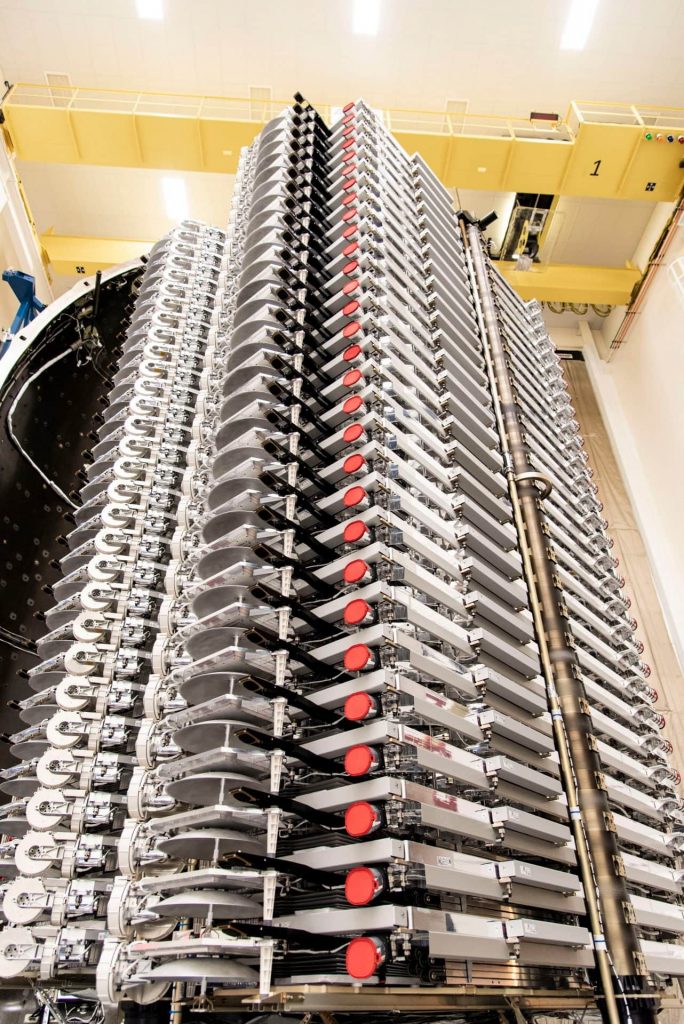
What is the Starlink Satellite?
Each Starlink V1.0 satellite has a compact design and a mass of 260 kg. SpaceX developed a flat-panel design, allowing them to fit as many satellites as possible into the Falcon 9’s 5.2 meter wide payload fairing. Due to this flat design, SpaceX is able to fit up to 60 Starlink satellites and the payload dispenser into the second stage, while still being able to recover the first stage. This is near the recoverable Falcon 9’s payload capacity to LEO, at around 17 tonnes.
For how small each Starlink satellite is, each one is packed with high-tech communication and cost-saving technology. Each Starlink satellite is equipped with 4 phased array antennas, for high bandwidth and low-latency communication, and two parabolic antennas. The satellites also include a star tracker, which provides the satellite with attitude data, ensuring precision in broadband communication.
The Starlink satellites are also equipped with an autonomous collision avoidance system, which utilizes the DOD’s debris tracking database to autonomously avoid collisions with other spacecraft and space junk.
Currently, the Starlink satellites being launched into polar orbit have a laser communication system on board. This system is currently in version 0.9, however SpaceX is expecting all new Starlink satellites to be equipped with it by next year.
To decrease costs, each satellite only has a single solar panel, which simplifies the manufacturing process. To further cut costs, Starlink’s propulsion system, an ion thruster, uses krypton as fuel, instead of xenon. While the specific impulse (ISP) of krypton is significantly lower than xenon’s, it is far cheaper, which further decreases the satellite’s manufacturing cost.
Ion Power
Each Starlink satellite is equipped with the first Hall-effect krypton powered ion thruster. This thruster is used both for ensuring the correct orbital position, but is also used for orbit raising and orbit lowering. At the end of the satellite’s life, this thruster is used to deorbit the satellite.
What is the Starlink Satellite Constellation?
A satellite constellation is a group of satellites that work in conjunction for a common purpose. Currently, SpaceX plans to form a network of roughly 12,000 satellites; however, in 2019 SpaceX filed an application with the Federal Communication Commission (FCC) for permission to launch and operate an additional 30,000 satellites. These additional satellites would be placed in orbits ranging from 328 km to 580 km, which would further decrease latency, and increase the bandwidth. To put this number of satellites into perspective, this is roughly 20 times more satellites than were launched before 2019.
Of the initial 12,000 satellites, 4,400 would operate on the Ku and Ka bands, with the other 7,600 operating on the V-Band.
To achieve initial coverage, SpaceX will use 72 orbital planes, in a 53 degree 550 km circular orbit. The Starlink satellites will then communicate with other Starlink satellites and ground stations, to form a mesh network.
Due to the vast number of Starlink satellites, many astronomers are concerned about their effect on the night sky. However, SpaceX is working with the astronomy community and implementing changes to the satellites to make them harder to see from the ground and less obtrusive to the night sky. SpaceX has changed how the satellites raise their orbits and, starting on Starlink V1.0 L9, added a sunshade to reduce light reflectivity. These changes have already significantly decreased the effect of Starlink on the night sky.
What is Falcon 9 Block 5?
The Falcon 9 Block 5 is SpaceX’s partially reusable two-stage medium-lift launch vehicle. Block 5 is the final iteration of the Falcon 9; the goal is to apply all the lessons learned from 56 previous Falcon 9 pre-Block 5 flights into a human-rated reusable rocket. The Falcon 9 contains 3 main components: a reusable first stage, an expendable second stage, and a reusable fairing.
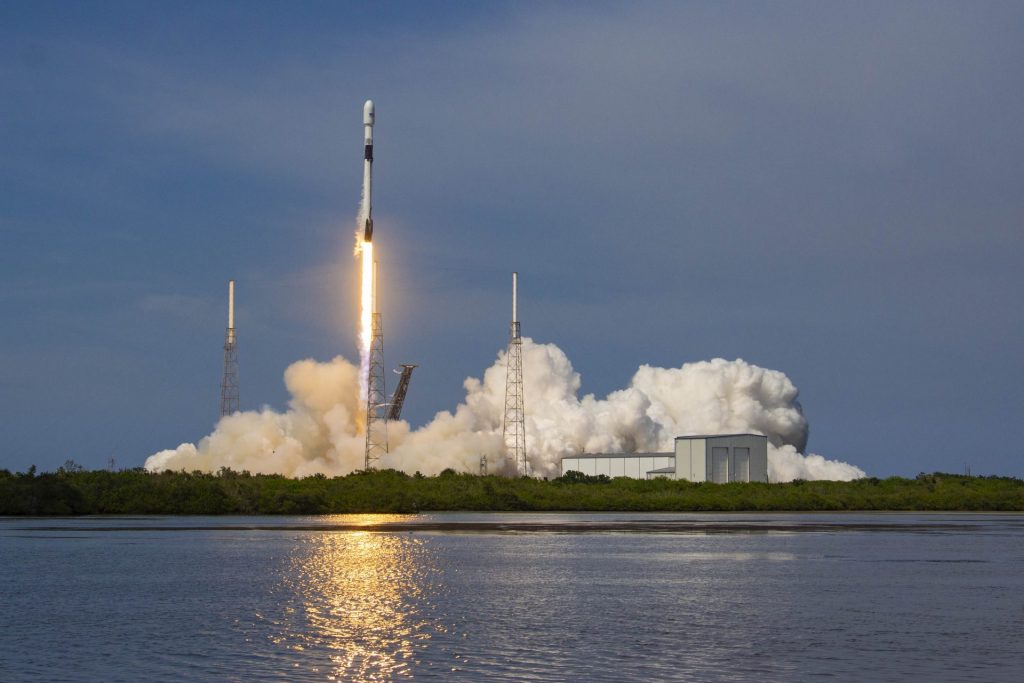
Block 5 updates:
SpaceX introduced a lot of changes on Block 5, allowing it to become the crew-launching reusable rocket that we know today. To start, the Composite Overwrapped Pressure Vessels (COPVs) had to undergo a complete redesign. NASA mandated the COPV redesign, as it had been the cause of both of the Falcon 9 failures: AMOS-6 and CRS-7.
Alongside with certification for human spaceflight, Block 5 came with a number of other major changes. To increase the amount of flight each booster could handle, and decrease the turnaround time, SpaceX reinforced the landing legs, upgraded the grid fins, and added a carbon fiber interstage. They also added heat-resistant external paint and upgraded the engines. For more information about the changes in Block 5, and the other Blocks of the Falcon 9, check out this video by the Everyday Astronaut:
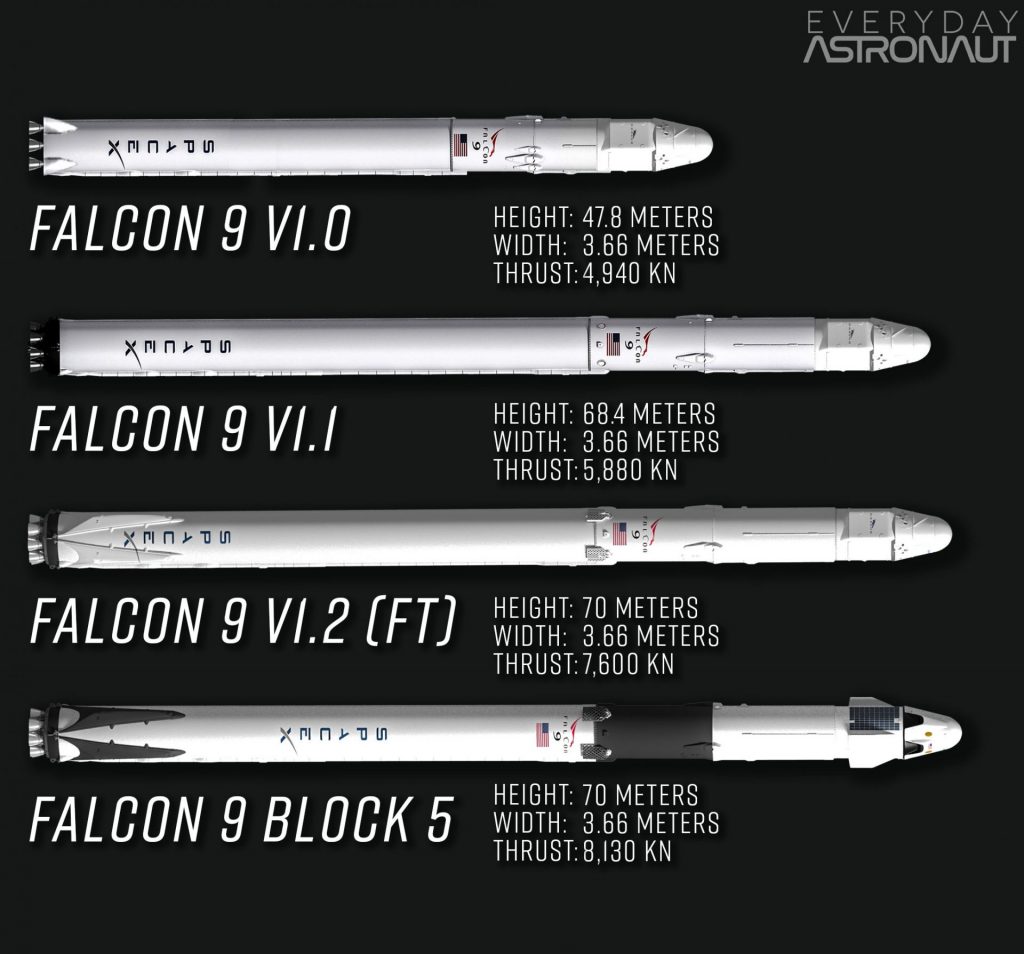
Falcon 9 Booster B1059
The booster supporting Starlink 19 is B1059. This booster has already flown 5 times, making it the third most mature booster in the fleet. Its maiden flight was launching the CRS-19 mission, which launched on December 5th, 2019. The booster’s second flight was launching the final first generation Cargo Dragon, CRS-20, which launched on March 7, 2020. B1059-6 then launched the Starlink V1.0 L8 mission on June 13, 2020 and the SAOCOM-1B mission on August 30, 2020. The booster’s most recent launch was on the NROL-108 mission, which launch on December 19th, 2020. As Starlink 19 is the booster’s sixth flight, its designation will change to B1059-6.
Following stage separation, the Falcon 9 will conduct 2 burns. These burns will softly touch down the booster on Of Course I Still Love You.
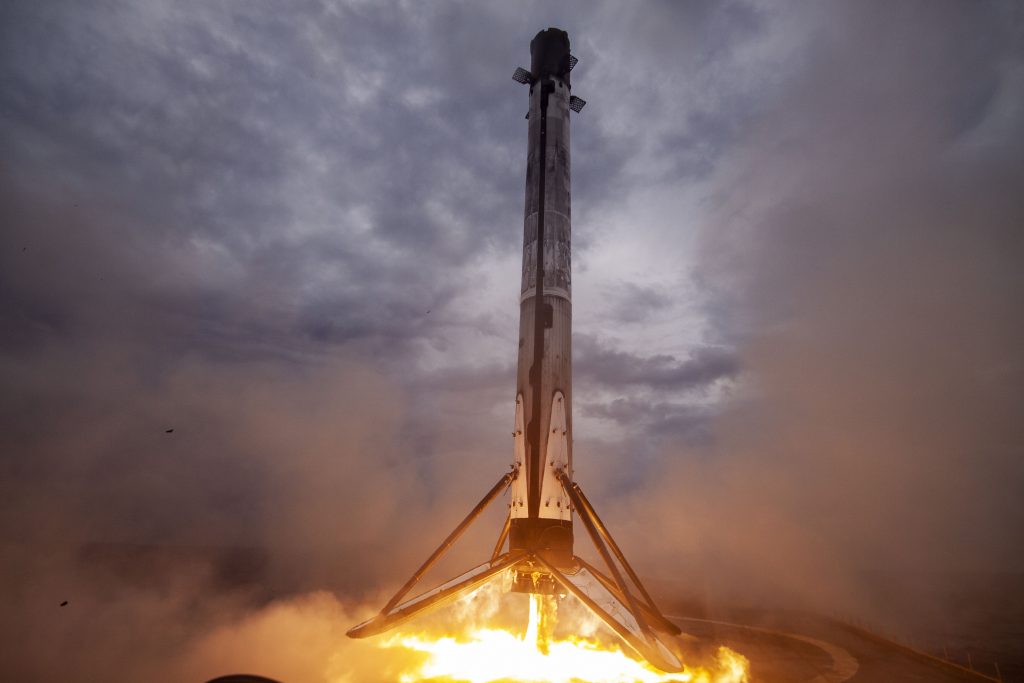
Fairing Reuse
SpaceX is the first entity ever that recovers and reflies its fairings. The recovery vessels, Go Ms. Tree and Go Ms. Chief, will most likely attempt to recover the fairing halves. After being jettisoned, the two fairing halves will use cold gas thrusters to orientate themselves as they descend through the atmosphere. Once at a lower altitude, they will deploy parafoils to help them glide down to a soft landing for recovery.
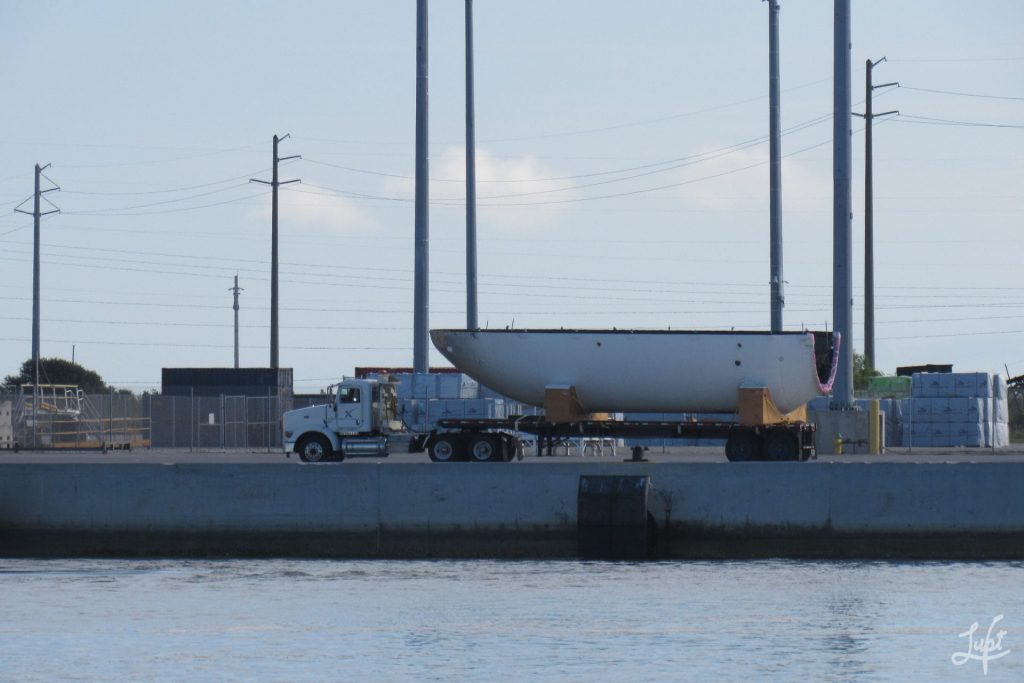
Fairing half loaded on semi (Credit: Lupi) 
Half of the fairing being taken off Go. Navigator. (Credit: Lupi) 
Mr. Steven testing fairing recovery (Credit: SpaceX) 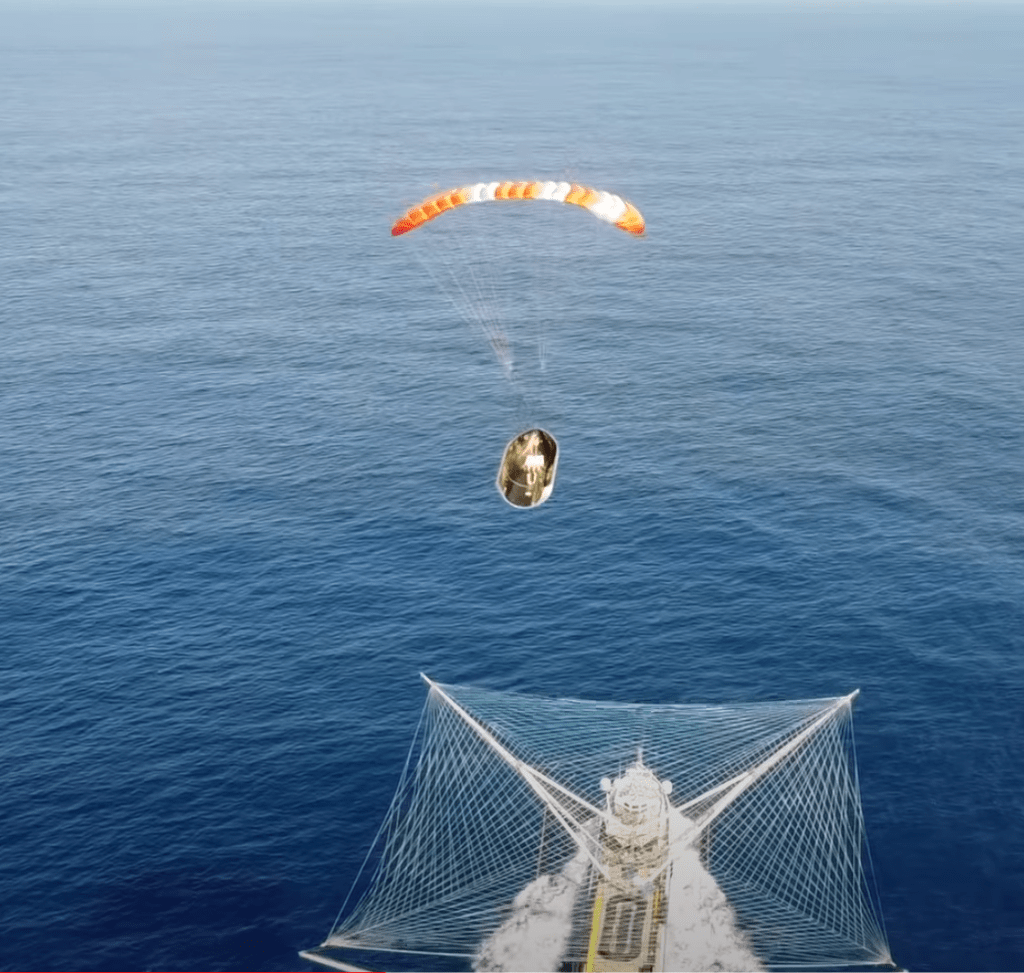
Ms. Tree catching a fairing (Credit: SpaceX)
Starlink 19 Full Mission Profile
Hr/Min/Sec Event
– 00:38:00 SpaceX Launch Director verifies go for propellant load.
– 00:35:00 RP-1 (rocket grade kerosene) loading underway.
– 00:35:00 1st stage LOX (liquid oxygen) loading underway
– 00:16:00 2nd stage LOX loading underway
– 00:07:00 Falcon 9 begins engine chill prior to launch
– 00:01:00 Command flight computer to begin final prelaunch checks
– 00:01:00 Propellant tank pressurization to flight pressure begins
– 00:00:45 SpaceX Launch Director verifies go for launch
– 00:00:03 Engine controller commands engine ignition sequence to start
– 00:00:00 Falcon 9 Liftoff
Launch, Landing, and Satellite Deployment*
Hr/Min/Sec Event
00:01:12 Max Q (moment of peak mechanical stress on the rocket)
00:02:32 1st stage main engine cutoff (MECO)
00:02:36 1st and 2nd stages separate
00:02:44 2nd stage engine starts (SES-1)
00:03:09 Fairing deployment
00:06:41 1st stage entry burn complete
00:08:24 1st stage landing
00:08:47 2nd stage engine cutoff (SECO-1)
00:45:31 2nd stage engine starts (SES-2)
00:45:32 2nd stage engine cutoff (SECO-2)
01:04:28 Starlink 19 payload deploy
* All times are approximate





I wish you would post/announce what direction the are being launched. We live in NE Florida and enjoy stepping outside to see them sail across the sky. However, we can only see them when they launch eastward. We wouldn’t have to go out and stare up at the sky needlesly and could continue to watch it all on tv. Thanks.
Thanks for updating us in the launches (to the whole crew)!
Does anyone know of a site that shows the trajectory apart from flightclub.io?
Hi There! I think the lift off times/dates don’t match those that are listed in https://everydayastronaut.com/upcoming-launches/ for starlink-19. I came here to double check that the estimated date was feb 12th 🙂
https://spacecoastlaunches.com/ its all in here
You have: “Following stage separation, the Falcon 9 will conduct 2 burns.“ There are actually 3 burns: boostback, entry, and landing.
Hi Danielle, I think the boostback burn is only used for landings back at or near the launch site. Otherwise, after stage separation, the booster continues on its ballistic trajectory downrange while turning 180 degrees via the cold gas thrusters. The entry burn reduces the velocity in the upper atmosphere to prevent aerodynamic overheating. The landing burn is precisely timed to reach zero velocity on the drone ship deck, due to the minimum throttle thrust of one Merlin engine being greater than the booster mass at that point.
There is no need for a boost back burn for a droneship landing
Hi Trevor, Thank you for your highly detailed pre-launch summary of each mission. You are providing a valuable service to the space watching community, and helping newcomers get up to speed on the rapid pace of launch technology development. Blessings! DonS
Thank you very much! It is my honor to provide this to the community. Thank you for taking time to read and learn
R.I.P 1st Stage. You’ll be missed.😭😭😭😭